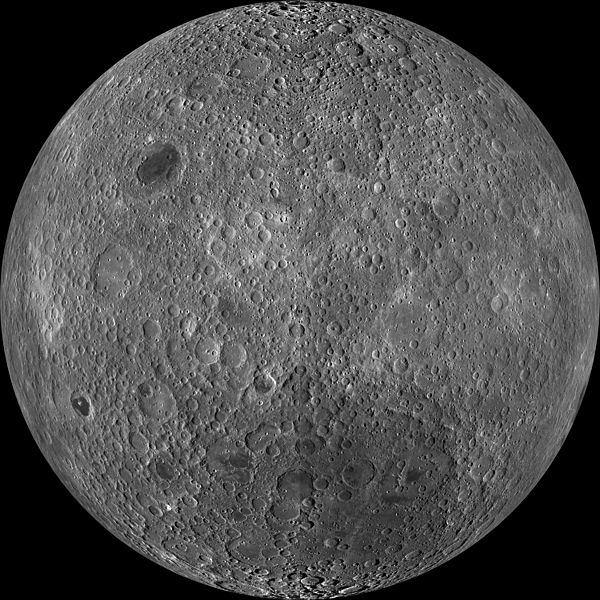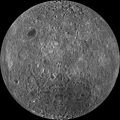Файл:Moon Farside LRO.jpg
Вӹлвӓл сӹн

Анзыцок анжымашын висӹкшӹ:600 × 600 пиксель. Вес разрешенивлӓ:240 × 240 пиксель | 480 × 480 пиксель | 768 × 768 пиксель | 1024 × 1024 пиксель | 2048 × 2048 пиксель | 18 000 × 18 000 пиксель.
Тӹнгӓлтӹш файл (18 000 × 18 000 пиксель, файлын висӹкшӹ: 85,34 МБ, MIME-тип: image/jpeg)
Файлын историжӹ
Файл тӹ жепӹн махань ылын, тидӹм ужаш манын датым темдӓл.
| Дата/жеп | Миниатюра | Висӹк | Пользователь | Комментари | |
|---|---|---|---|---|---|
| кӹзӹтшӹ | 02:47, 20 март 2014 |  | 18 000 × 18 000 (85,34 МБ) | Huntster | High resolution mosaic. |
| 07:12, 9 апрель 2011 |  | 1600 × 1600 (1,44 МБ) | Bubba73 | {{Information |Description ={{en|1=Far side of the Moon, by NASA's Lunar Recon. Orbiter}} |Source =http://apod.nasa.gov/apod/image/1104/farside_lro1600.jpg |Author =NASA - LRO |Date =2011? |Permission = |other_versions = } |
Файлым кычылтмаш
Ти файлым кычылтшы ик страницӓӓт уке.
Файлым цилӓ вӓре кычылтмаш
Ти файл техень викивлӓштӹ кычылталтеш:
- af.wikipedia.org проектӹштӹ кычылтмаш
- az.wikipedia.org проектӹштӹ кычылтмаш
- be.wikipedia.org проектӹштӹ кычылтмаш
- bjn.wikipedia.org проектӹштӹ кычылтмаш
- bn.wikipedia.org проектӹштӹ кычылтмаш
- bs.wikipedia.org проектӹштӹ кычылтмаш
- ca.wikipedia.org проектӹштӹ кычылтмаш
- cs.wikipedia.org проектӹштӹ кычылтмаш
- de.wikipedia.org проектӹштӹ кычылтмаш
- en.wikipedia.org проектӹштӹ кычылтмаш
- en.wikibooks.org проектӹштӹ кычылтмаш
- en.wikiversity.org проектӹштӹ кычылтмаш
- Solar System, technical/Moon
- User:Marshallsumter/Radiation astronomy2/Visuals
- Draft:Original research/Planets
- User:Marshallsumter/Radiation astronomy2/Visuals/Quiz
- User:Marshallsumter/Rocks/Rocky objects/Astronomy
- User:Marshallsumter/Radiation astronomy/Courses/Principles/Hourly 2
- User:Marshallsumter/Radiation astronomy/Courses/Principles/Midterm quiz
- User:Marshallsumter/Radiation astronomy/Courses/Principles/Final quiz
- Titan/Quiz
- User:Marshallsumter/Rocks/Rocky objects
- Draft:Enceladus/Quiz
- Moon/Quiz
- Stars/Sun/Heliology/Quiz
- Earth/Quiz
- Stars/Reds/Quiz
- Draft:Dione/Quiz
- User:Marshallsumter/Radiation astronomy2/Scattered disks/Quiz
- User:Marshallsumter/Radiation astronomy1/Kuiper belts/Quiz
- Liquids/Liquid objects/Moon
- User:Marshallsumter/Radiation astronomy/Craters
- es.wikipedia.org проектӹштӹ кычылтмаш
Ти файлын кымданрак кычылтмыжым анжал лӓктӓш.


